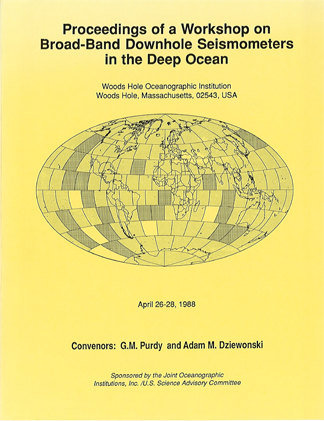Broadband Downhole Seismometers
April 26-28, 1988 – Woods Hole, Massachusetts
Convener: Adam Dziewonski, Mike Purdy

Summary
The Earth is the most accessible example of condensed matter in the universe. Understanding its structure helps us to understand its origin, the dynamic forces at work within it in the past and present, and its evolution as a planetary body. Within the Earth are two great machines. One involves convection in the Earth’s solid mantle and drives the ponderous motion of the plates, giving rise to earthquakes and volcanic eruptions. The other involves convection in the liquid core and produces the Earth’s internal magnetic field. An ultimate goal of geoscientific research is to understand the dynamics of this interior machinery.
The availability of data, which represent the remote sensing of the physical properties of the Earth’s deep interior, is the necessary condition for the progress towards this goal. Some very encouraging results on whole Earth tomography have been obtained during last several years. Yet, the current resolution of these images is very low. To improve it on a global scale, it is necessary to deploy geophysical observatories on the ocean bottom. This represents a number of technical problems, and thus, the need for this workshop. The important conclusions of the workshop can be considered in three categories: the definition of the primary scientific objectives, the description of the major challenges related to the recording of high quality data, and a list of specific recommendations.
Organizing Committee
G. Michael Purdy, Woods Hole Oceanographic Institution
Adam Dziewonski, Harvard University






